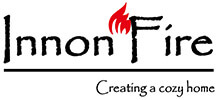For cheaper products less than USD50.00,We can supply the sample free of charge ,but clients need to pay for the freight.
We can supply sample free of charge for big potential clients.
35-40days for regular order (according to the quantity)
2 years (only body, not including inside Vermiculite plate, grates & glass), we can send extra knob fittings if needed.
2-3models mix 1×20′
Western Europe & East Europe and Middle East countires.
Yes, we has our own factory to assemble the goods, we have our own building punching workshop , weld workshop, painting line workshop, finished product warehouse.
30% T/T in advance, the balance against the copy of B/L
1pc/ carton or 1pc/plywood case
Yes, We can custom designed for any specific application
Some of our stoves has CE certificate and some has DEFRA certificate.
Imported 600-800degree High temperature Paint
Imported 750degree heat resistance glass ,brand: Schott(Germany)
Most of our stove are multi-fuel stoves fitted with multi-fuel grates, so a wide range of fuels can be burnt such as smokeless coals,dry seasoned wood,
and wood briquettes. DO NOT BURN wet or unseasoned wood, construction timber, painted or treated wood, driftwood or manufactured board products.
Doing so will result in the wood burning inefficiently and excess smoke, soot and tar will be produced. This will coat and damage the internal components
of the stove and flue and could result in a chimney fire. Also it will make stove glass draken.
A stove has certain parts that will need maintaining and replacing over time due to wear and tear.
The fire grate, firebricks (Vermiculite or cast iron) and throat plate can warp after a while as they are doing their job protecting the outer skin of the stove and can be replaced very easily if need be.
During the first few times the stove is used, the heat resistant paint will be curing, and may give off small amounts of smoke and odours. This is completely normal for this type of appliance, and the room should be well ventilated.
To aid this process and not damage the stove finish, the first few times a new stove is used the fire should be kept to a moderate size, and not fired vigorously.
The door seals are very tight when manufactured to ensure that the stove will work efficiently.
If the door seems to be stuck, you need to open it gently with applied force to ensure you don’t break the handle or ruin the fire rope seal.
Should the fire rope become loose, just push it back into the channel and leave the door on the catch for the next burn to ensure that this doesn’t happen again.
The vents are machine tightened in the factory so can be quite stiff upon first use.
If these appear not to open, you need to loosen them. Using grips and a cloth so as not to scratch the knob, loosen it off slightly. It should then be much easier to operate the vents.
If you are installing your wood burning stove in a free standing location you will most likely need to first begin by installing a non combustible hearth for your wood burning stove to stand on.
This can be made of any non combustible material which is a minimum thickness of 12 mm .Some of the most fashionable materials are slate, marble and for the contemporary look, toughened glass.
For the more budget minded, materials such as reclaimed quarry tiles, patio slabs or a combination of steel and concrete can used to make an attractive base or plinth for your stove.
The size of the hearth you will need depends on the size of the wood burning stove you intend to install. There are specific requirements relating to the size of hearth required in
Approved Document . If the stove operates as a closed appliance then the minimum hearth depth required to the front of your stove is 225 mm. This should extend to 300 mm for an open appliance.
The hearth should also extend by 150 mm to the sides and rear of the stove.
